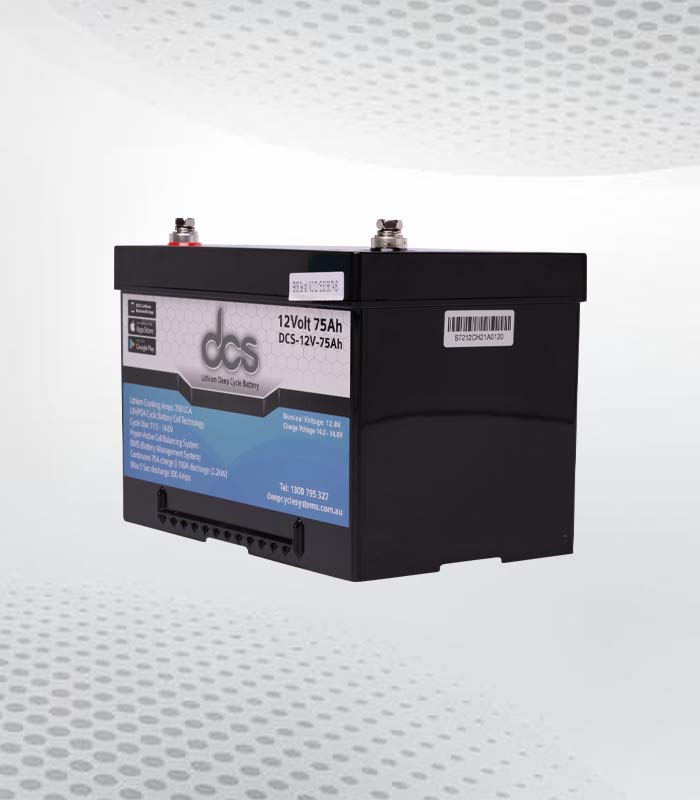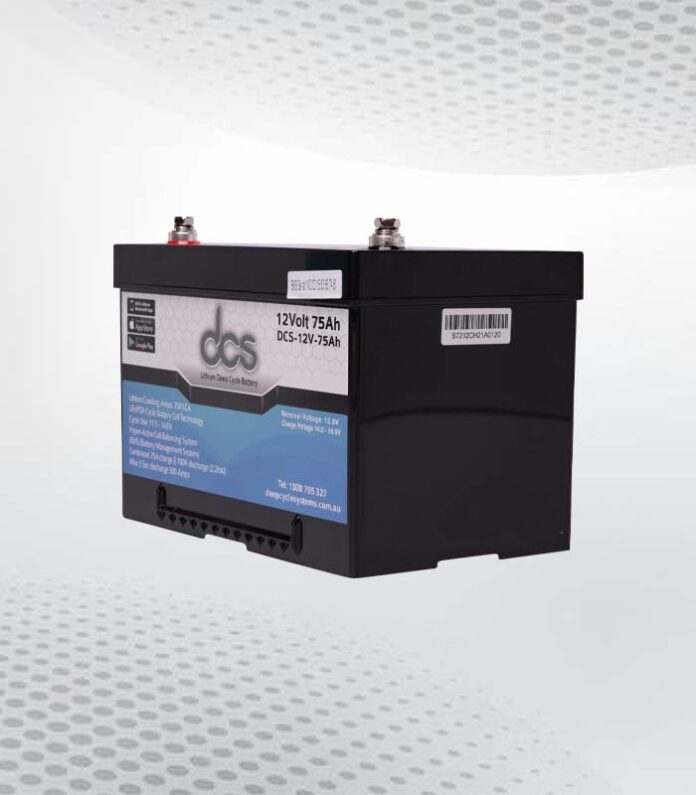Deep cycle batteries, especially those with a capacity of 100 amp-hours (Ah), have become an indispensable power source for a wide array of applications. From renewable energy storage systems to recreational vehicles and marine applications, the versatility and efficiency of 100 Ah deep cycle batteries make them an ideal choice for those in need of reliable, long-lasting energy storage solutions. This blog post will delve into the nuances of the 100 Amp hour deep cycle battery, exploring its characteristics, types, applications, and maintenance tips to help you maximise its potential.
Understanding the 100 Amp-Hour Deep Cycle Battery
A 100 amp-hour deep cycle battery distinguishes itself by its capability to deliver a consistent current over prolonged periods. This contrasts sharply with the instantaneous, high-current discharge seen in starter batteries for engines.
The term ‘100 amp-hour’ describes its capacity to, in theory, discharge 100 amps of current for an hour, or a proportional amount over a different duration, such as 50 amps over two hours. However, it’s paramount to recognise that actual performance may deviate from these theoretical capacities due to external factors including temperature variations, the battery’s age, and the specific demands of the load being powered.
Deep cycle batteries are specifically engineered for repeated discharge and recharge cycles, which is a fundamental requirement for systems where the battery is regularly drawn down, such as in renewable energy setups or mobile living arrangements. Their design focuses on durability and the ability to recover from deep discharges, setting them apart as the go-to choice for sustained, reliable power delivery across a spectrum of applications.
The Various Types of 100 Amp-Hour Batteries
The market offers a plethora of options when it comes to the chemical compositions of 100 Ah batteries, each bringing its distinct benefits and limitations to the table.
Among the most prevalent variants are lead-acid, lithium-ion, AGM (Absorbent Glass Mat), and gel batteries. Lead-acid batteries have stood the test of time, lauded for their affordability and sturdiness. In contrast, lithium-ion variants, though commanding a higher initial outlay, stand out for their superior energy density, longevity, and minimal upkeep demands.
AGM and gel batteries represent advanced forms of the traditional lead-acid battery, engineered to eliminate leakage risks and reduce maintenance chores. AGM batteries, in particular, are celebrated for their exemplary performance under frigid conditions and their proficiency in rapid charging. Each battery type embodies a unique set of characteristics tailored to diverse operational requirements and environmental conditions.
Conversely, for applications where cost-effectiveness takes precedence, and weight is of lesser concern, lead-acid or AGM alternatives might be more suitable. This variation in battery technology underscores the importance of matching the battery type to the specific demands and conditions of its intended application.
Key Applications of a 100 Amp Deep Cycle Battery
The versatility and resilience of the 100 Amp deep cycle battery find it at the heart of numerous essential and leisure applications. In the sphere of renewable energy, these batteries are pivotal, storing power generated from solar panels or wind turbines, thereby facilitating off-grid living and providing a buffer in power backup systems. Their ability to sustain prolonged discharges makes them indispensable in environments where access to conventional power sources is limited or non-existent.
In the world of recreational vehicles and boating, the 100 Ah battery powers a range of necessities and comforts — from lighting and refrigeration to navigation systems, ensuring that life on the move is both possible and pleasurable. Its robustness and longevity make it a reliable companion for adventures far from the reach of the electrical grid.
Beyond these, the battery plays a critical role in portable power solutions, offering a lifeline in remote locations for equipment ranging from scientific instruments to communication devices. Emergency lighting systems, too, rely on the steadfast energy supply from these batteries, providing illumination and safety in critical situations.
Their widespread use underscores not only the adaptability of the 100 Ah deep cycle battery but also its capacity to drive forward innovations in how and where we use power, echoing the growing shift towards more mobile and self-sufficient lifestyles across a broad spectrum of applications.
Maximising the Life of Your Deep Cycle Battery
To enhance the longevity and efficacy of your 100 Ah deep cycle battery, adopting a regime of diligent maintenance and cautious usage is imperative. It’s crucial to refrain from depleting the battery beyond half of its capacity; doing so can avert undue wear and prolong its operational lifespan.
 Regular charging is essential, particularly after use, to prevent the detrimental effects of deep discharge cycles. Storage conditions play a significant role; the battery should be kept in a location that is both cool and devoid of moisture, as extreme temperatures and damp environments can precipitate sulphation and accelerate corrosion.
Regular charging is essential, particularly after use, to prevent the detrimental effects of deep discharge cycles. Storage conditions play a significant role; the battery should be kept in a location that is both cool and devoid of moisture, as extreme temperatures and damp environments can precipitate sulphation and accelerate corrosion.
The battery’s terminals and connections warrant periodic inspections and cleaning to ensure unimpeded charging and power output. Implementing these measures can substantially augment the durability and functional performance of your deep cycle battery, allowing it to serve your energy needs efficiently for an extended period.
Charging Your 100 Amp-Hour Deep Cycle Battery
Ensuring the health and longevity of your deep cycle battery hinges on adopting correct charging practices. It’s essential to utilise a charger that is not only compatible with the battery’s specific chemistry but is also designed to cater to the unique needs of deep cycle batteries.
This ensures that the charging process adheres to the battery’s required profile, which varies significantly across different types of batteries. For example, lithium-ion batteries necessitate a distinct charging algorithm compared to their lead-acid counterparts. One common pitfall to avoid is overcharging, as this can cause the battery to overheat, leading to potential damage and a reduction in its lifespan. Employing a smart charger can be a game-changer in this regard.
Such chargers intelligently adjust the charge rate based on the battery’s current state and halt the charging process once it is fully charged, thus eliminating the risks associated with overcharging. Adherence to these charging guidelines not only preserves the functional integrity of the battery but also ensures it remains a dependable source of power for its intended applications.
How to Choose the Right 100 Amp-Hour Battery for Your Needs
Selecting the correct 100 Ah deep cycle battery demands a careful evaluation of your particular energy requirements, the spatial constraints for installation, and any specific weight restrictions. For those in pursuit of a lightweight and compact energy solution, lithium-ion batteries emerge as the prime choice, albeit at a higher cost.
Conversely, in scenarios where the battery’s weight and size are secondary concerns, opting for lead-acid or AGM variants might present a more economical option without compromising on performance. Additionally, it’s crucial to consider the environmental conditions your battery will face.
Certain batteries exhibit superior performance in extreme temperature conditions, making them more suitable for use in environments prone to severe weather. The decision-making process should also encompass an assessment of the battery’s intended application. Whether it’s for renewable energy systems, recreational vehicles, or marine use, each application might favour a different type of battery based on the specific energy demands and the frequency of charge and discharge cycles anticipated.
By aligning your selection with these pivotal factors, you ensure that your 100 Ah deep cycle battery not only meets but exceeds your expectations, providing a reliable and efficient power source tailored to your unique needs.
The Environmental Impact of Deep Cycle Batteries
Deep cycle batteries, crucial for various energy storage solutions, inherently carry an environmental burden that warrants attention. The production and disposal of these batteries involve substances that, if not managed correctly, can have detrimental effects on the environment. Lead-acid batteries, for instance, incorporate lead and sulphuric acid, materials hazardous to both human health and natural ecosystems.
The disposal process for these batteries necessitates specialised recycling facilities that can safely reclaim the lead and neutralise the acid to mitigate their environmental impact. On the other hand, lithium-ion batteries, though less toxic, present recycling challenges due to their intricate chemical composition. The recycling process for lithium-ion batteries is more complex and requires advanced technology to recover valuable materials effectively.
Eco-conscious selection and disposal practices can significantly reduce the environmental footprint of using deep cycle batteries. Choosing batteries from manufacturers who adhere to sustainable production methods and who offer recycling programmes for end-of-life products is a step towards minimising ecological harm.
Additionally, consumers are encouraged to participate in battery recycling initiatives to ensure that these batteries are disposed of in an environmentally friendly manner, thus contributing to the circular economy and reducing the ecological impact associated with their use.
FAQs
Can a 100 Ah battery start my vehicle?
Using a 100 Ah deep cycle battery to start a vehicle isn’t advisable. Despite being capable of powering various devices over an extended period, deep cycle batteries are not designed to deliver the immediate high current burst that starting an engine requires.
What is the expected lifespan of a 100 Ah battery?
The longevity of a 100 Ah battery is influenced by its type, how it’s used, and the care it receives. For instance, lead-acid variants typically have a life expectancy ranging between 3 to 7 years, while lithium-ion options can last upwards of 10 years, provided they are maintained optimally and used within their intended parameters.
Can I connect several 100 Ah batteries together?
Yes, connecting multiple 100 Ah batteries is feasible. Linking them in series will increase the overall voltage, whereas a parallel connection boosts the total capacity (Ah). However, to ensure uniform performance and longevity, it’s crucial that all interconnected batteries are of the same type, age, and have similar usage histories.
How can I ascertain if my battery is fully charged?
Most contemporary smart chargers feature indicators that denote the battery’s charge status. Alternatively, using a multimeter to measure the battery’s voltage when it is not in a state of charge or discharge offers a reliable method to gauge its charge level. This approach helps avoid overcharging or underutilising the battery, contributing to its overall health and longevity.
Conclusion
The 100 Ah deep cycle battery emerges as an essential component in a broad spectrum of energy storage requirements. Its versatility and robustness serve as the foundation for countless applications, from renewable energy systems to the demands of mobile living. By gaining a comprehensive understanding of the battery’s capabilities and adhering to guidelines for proper selection, maintenance, and charging protocols, users can significantly enhance the performance and lifespan of their battery.
This Article Was First On Published
| Related Business Listings |
| Directory Submissions |
| Regional Directory |

